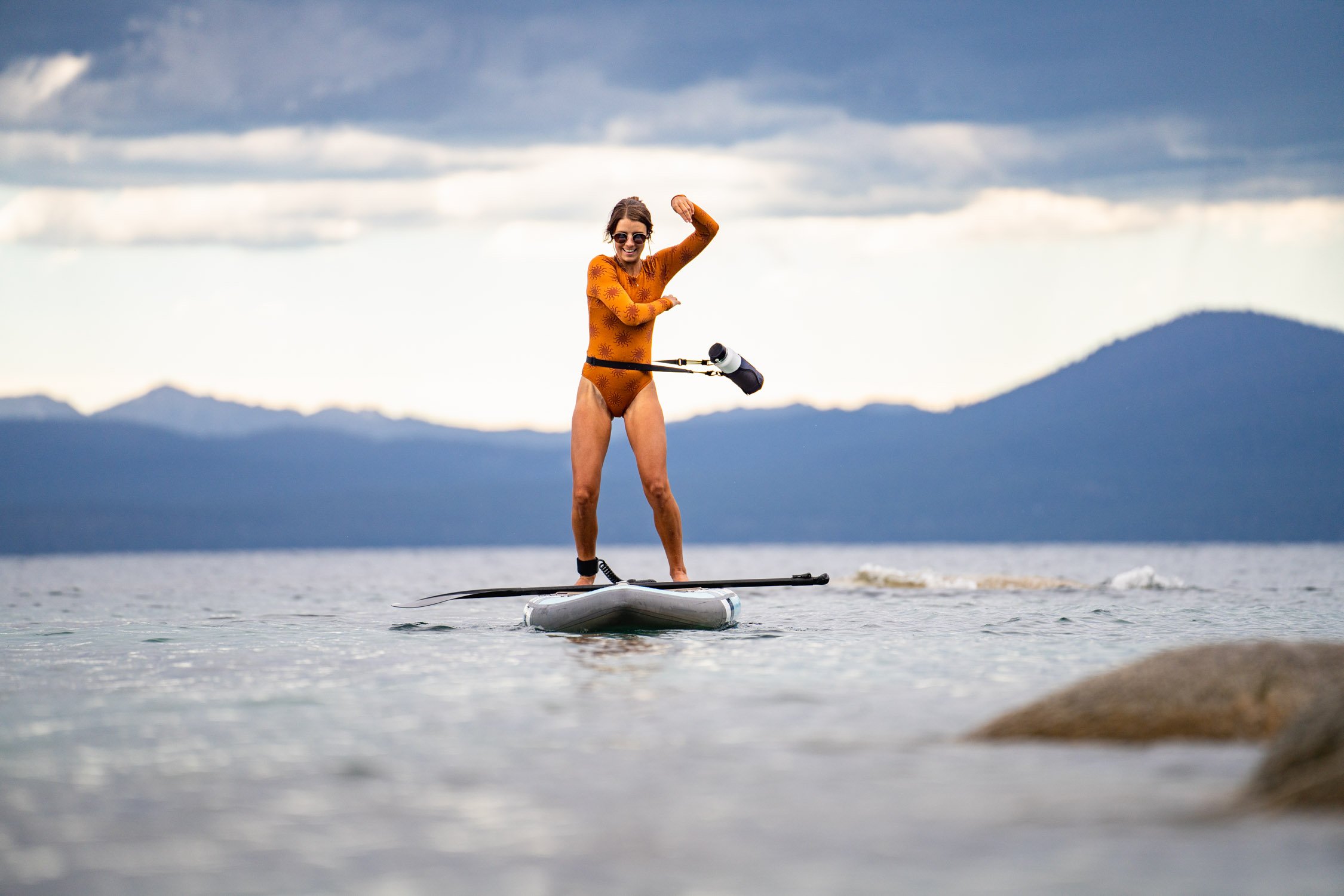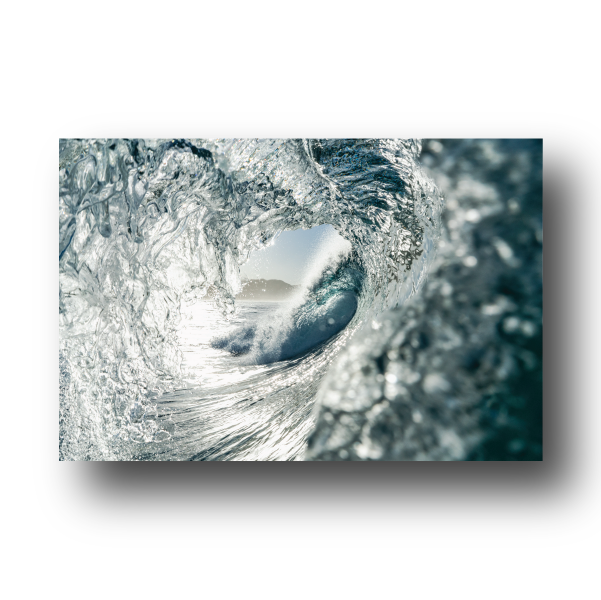12 Pro Tips for Beginner Stand-Up Paddleboarders
Stand-up paddleboarding (SUP) has rapidly grown in popularity as one of the most accessible and enjoyable water sports. Combining the tranquility of being on the water with a full-body workout, SUP offers a unique way to explore lakes, rivers, and coastal waters. For those new to paddleboarding, it may seem intimidating at first, but with the right guidance, you can quickly find your balance and begin to glide across the water with ease. This article covers 12 essential tips for beginners, helping you build confidence and make the most of your SUP experience.
Kristin testing her balance while on a paddle board. Photo by Dalton Johnson
Background:
SUP originated in Hawaii as an offshoot of surfing, where surfers would stand on their boards and paddle to stay close to the wave lineup. Over time, it evolved into a sport of its own, with people paddleboarding on flat water, catching small waves, and even competing in SUP races. Unlike surfing, SUP doesn’t require waves, making it a versatile activity that can be enjoyed on a variety of water bodies. It’s a fantastic way to engage with nature, offering both a peaceful escape and a challenging workout.
12 Pro Tips for Beginner Stand-Up Paddleboarders:
1. Start on Calm Water
When you're first learning to paddleboard, choose a calm, flat body of water like a lake or a slow-moving river. Calm water allows you to focus on your balance and paddling technique without worrying about waves or strong currents. Starting in a controlled environment will help you build confidence and get comfortable on the board before venturing into more challenging waters.
2. Choose the Right Board
While this article doesn’t focus on gear, it’s important to know that different types of SUP boards cater to different activities, such as touring, yoga, or surfing. For beginners, wider and more stable boards are easier to balance on. When renting or borrowing a board, opt for one that’s recommended for beginners to ensure you have a stable platform to practice on.
3. Learn How to Stand Up Properly
Standing up on a paddleboard for the first time can be tricky. Start by kneeling on the board in the center, where it is most stable. Place the paddle across the board in front of you for support. When you’re ready, slowly stand up one foot at a time, keeping your feet parallel and shoulder-width apart. Look ahead at the horizon to maintain your balance and avoid looking down at your feet.
4. Focus on Your Stance
Once you’re standing, your stance is crucial for maintaining balance and control. Keep your knees slightly bent, and your feet flat on the board. Distribute your weight evenly between both feet, and engage your core to stay centered. Avoid locking your knees, as this can make you more prone to losing your balance. A relaxed but engaged posture will help you react to any shifts in the board.
5. Hold the Paddle Correctly
Many beginners instinctively hold the paddle incorrectly. The correct way to hold it is with the blade angled forward (away from you). When paddling, place one hand on the top of the paddle (the T-grip) and the other hand lower on the shaft. This grip gives you better leverage and control over your strokes, allowing you to paddle more efficiently.
6. Practice Falling and Getting Back On
Falling off your board is a natural part of learning to paddleboard, and knowing how to get back on is essential. Practice falling in shallow water to get comfortable with it. When you fall, try to fall away from the board to avoid injury. To get back on, swim to the center of the board, grab the handle or edge, and pull yourself up onto your stomach. Then, crawl back into a kneeling position before standing up again.
7. Master Basic Paddle Strokes
There are a few basic paddle strokes every beginner should learn. The forward stroke propels you through the water, while the reverse stroke helps you slow down or stop. The sweep stroke is used for turning the board. Practice these strokes on both sides to build a balanced technique. Remember to use your core muscles to power your strokes, rather than relying solely on your arms.
8. Look Where You Want to Go
Keeping your eyes on the horizon rather than your feet will help you maintain better balance and direction. Your body tends to follow where your eyes go, so looking ahead will naturally guide your board in that direction. This tip is especially useful when you’re paddling towards a specific destination or navigating around obstacles.
9. Respect the Wind and Water Conditions
Wind and water conditions can significantly impact your paddleboarding experience. Wind can create choppy water and make paddling more difficult, especially for beginners. Check the weather forecast before heading out, and if it’s windy, start your session paddling into the wind. This way, you’ll have an easier time paddling back when you’re tired. Always be aware of your surroundings and adjust your plans accordingly.
10. Stay Close to Shore
As a beginner, it’s wise to stay close to the shore, especially in open water or unfamiliar areas. This ensures that you can quickly get to safety if you get tired or encounter challenging conditions. Paddle along the shoreline rather than heading straight out to deep water, where the wind and currents may be stronger.
11. Practice Turning Techniques
Turning your board is a fundamental skill that will give you more control and confidence on the water. Practice turning using the sweep stroke, which involves a wide, sweeping motion with your paddle. You can also practice pivot turns by stepping back on the board to lift the nose out of the water, making the board easier to spin around. These techniques will help you navigate more effectively and avoid obstacles.
12. Embrace the Learning Process
Like any new sport, paddleboarding comes with a learning curve. Don’t get discouraged if you fall off the board or struggle with your balance at first. Embrace the process of learning, and celebrate the small victories along the way. With practice, you’ll improve your skills and start to enjoy the experience even more. Remember, every paddle session is an opportunity to learn and grow as a paddleboarder.
Stand Up Paddleboarding at sunset on Lake Tahoe. Photo by Dalton Johnson
Stand-up paddleboarding offers a fantastic way to connect with nature, stay active, and enjoy time on the water. By following these 12 pro tips, beginners can build a strong foundation for their paddleboarding journey, gaining the skills and confidence needed to explore new waters safely and enjoyably. Whether you’re paddling on a serene lake or along a coastal shoreline, SUP provides endless opportunities for adventure and relaxation. So grab a paddle, hit the water, and start your paddleboarding adventure today!











